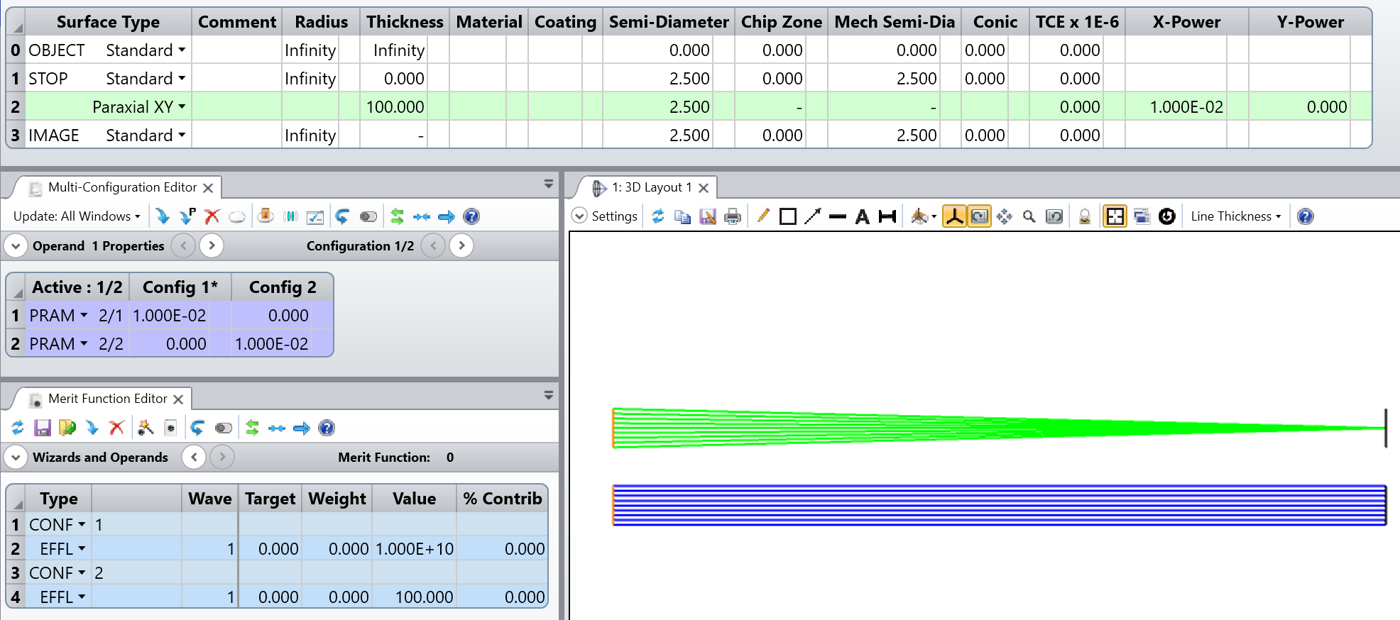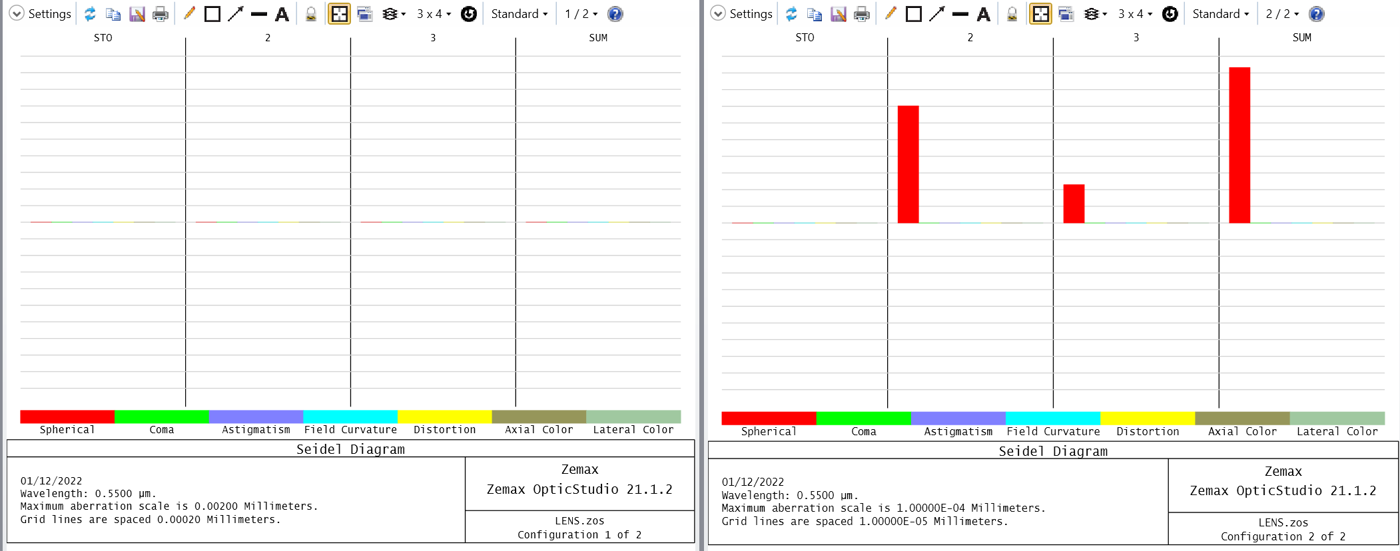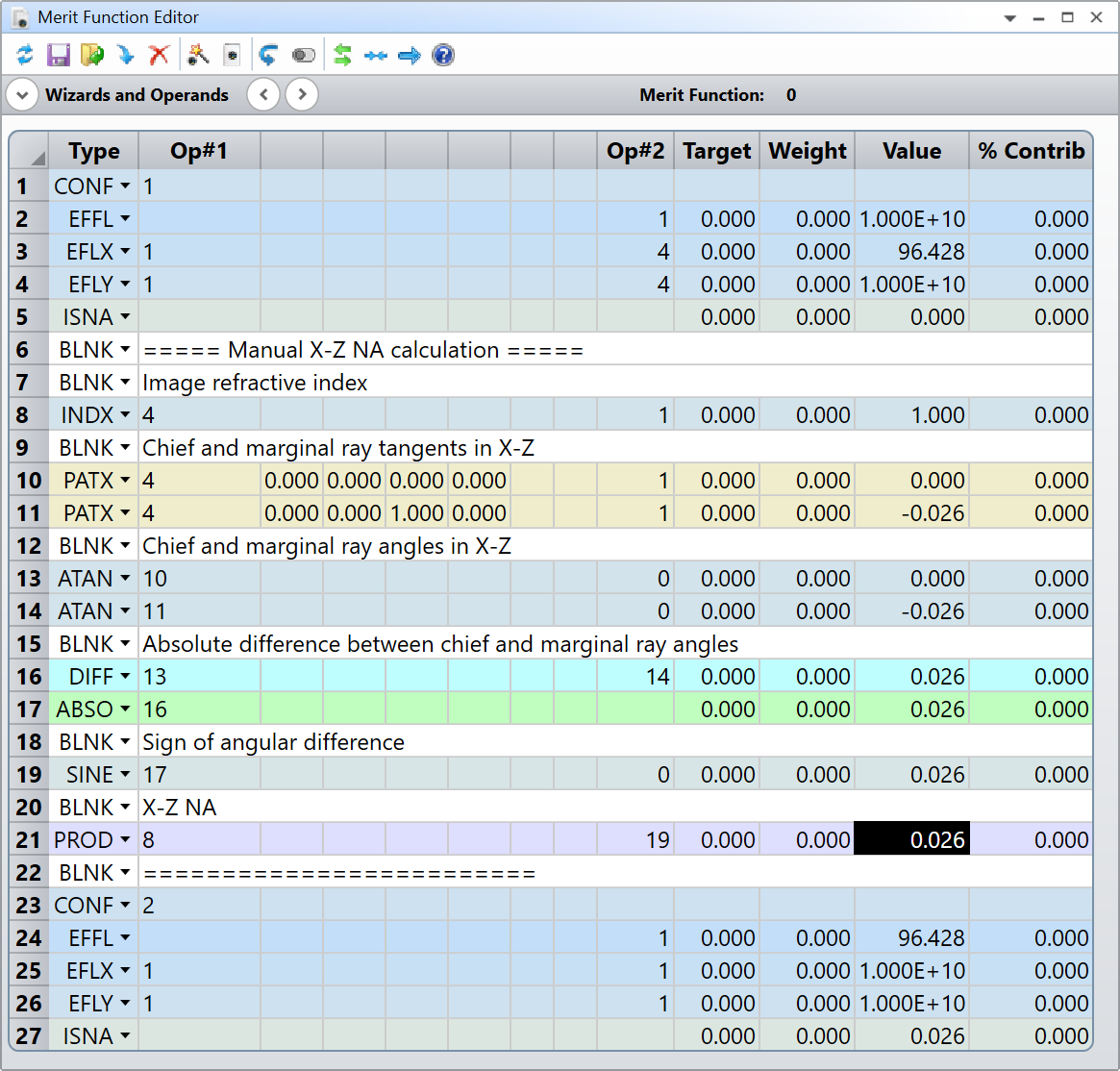Hi, I have a question with regards to how Zemax handles cylindrical/biconic systems. If I have a lens system where the say I have a pair of cylindrical lenses with two different focal lengths rotated 90 degrees about the light propagation axis, i.e. the system would have two different EFL, NA in the x, y axis, how does Zemax calculate parameters such as imaging NA, EFL, Seidel sums etc.? I noticed for example, for Seidel sums, Zemax does not break up the calculation of Seidel sums into two separate transverse axis but just gives one set of numbers. Zemax also gives the imaging NA, EFL data in the system data as one number instead of say two in two different axis. Is there a way to be able to get data for x and y separately? Thanks!
Cylindrical lenses in Zemax sequential mode
Best answer by David.Nguyen
Hi boon,
I’m note quite sure, but I did a simple test with the Paraxial XY surface, and it seems like EFFL is calculated in the Y-Z plane.

I did a similar test with the Biconic surface, and got the same behaviour.

Basically, only the optical power in the Y-Z plane seem to be considered for EFFL. Interestingly, if I display the Seidel Diagram of the two configurations for this last example, it gives the following:

Which again shows that the coefficients are only calculated correctly for configuration 2 (optical power in the Y-Z plane only).
Based on those results, on your current system, you’ll get the Y-Z data. If you make a second configuration of your system where you put the X-Z values into the Y-Z ones and vice versa (you sort of turn your system 90 degree about the optical axis), you’ll effectively get the X-Z data, if that makes sense.
Also, don’t forget there are the operands EFLX and EFLY which will give you the effective focal length in the corresponding X/Y-Z plane. For the NA, you could also use the Merit Function to calculate it in the X-Z plane.

I hope this helps, and take care,
David
Enter your E-mail address. We'll send you an e-mail with instructions to reset your password.



